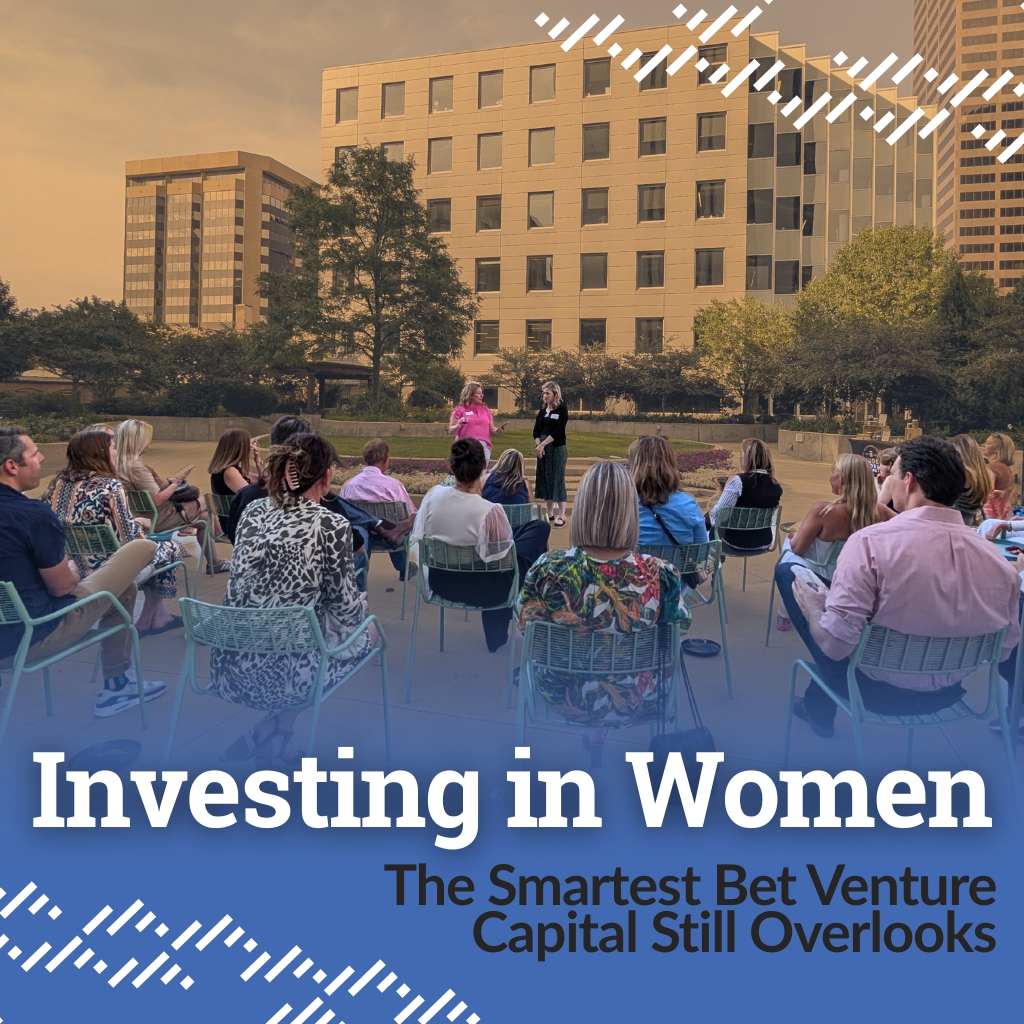
The phrase "invest in what you know" has become gospel in investment circles, most famously championed by Peter Lynch, the legendary manager of the Fidelity Magellan Fund. Lynch believed that individual investors could gain an edge by sticking to industries they understood intimately. For decades, this wisdom seemed unshakeable.
But here's the uncomfortable truth: in today's early-stage startup landscape, this advice isn't just outdated: it might be the worst possible strategy you can follow.
When Industry Knowledge Becomes a Liability
Consider this scenario: You've spent fifteen years in the retail industry, watching trends, understanding consumer behavior, and seeing how supply chains evolve. A startup appears in your deal flow with what looks like an innovative retail technology solution. Your industry knowledge tells you this could work. The problem? Your deep familiarity might be blinding you to the very disruptions that make early-stage investing profitable.

Industries don't stand still, even when we think we understand them completely. They cycle through booms and busts, stall unexpectedly, and get disrupted by forces that often come from completely outside the sector. While you may genuinely "know" an industry, that knowledge comes with dangerous assumptions: that the current cycle will continue, that incumbents aren't already moving in directions you can't see, that regulations won't shift quietly in the background, or that automation and AI won't create discontinuous change.
In venture capital, timing is everything. Being too early is just as fatal as being too late, and familiarity with an industry offers zero protection from missing these critical timing windows. Your expertise might actually make you overconfident about timing, leading to investments at precisely the wrong moment in a sector's evolution.
The Vibe Coder Problem
We now live in an era where a small team: or even one talented developer: can build a minimum viable product over a weekend. This reality has fundamentally collapsed the traditional meaning of "traction" in ways that challenge everything we thought we knew about early-stage investing.
It used to be that having an MVP, showing early revenue, or demonstrating initial customer usage meant something substantial: that you had a real head start over potential competitors. Today, these signals can be manufactured quickly and cheaply by anyone with basic coding skills and a decent understanding of user experience design.
If you're investing in what you know, particularly in software solutions for familiar problems, you may be backing ideas with no real defensibility. When a product can be recreated in days rather than months, competitive moats evaporate faster than morning fog. What looks like a promising early-stage company might actually be nothing more than a temporarily differentiated version of something that dozens of other teams could build just as quickly.
This creates a particularly dangerous trap for investors who understand the problem space well. Your familiarity with the pain points makes the solution seem obvious and valuable, but that same obviousness means it's probably obvious to many others as well.
The Great M&A Reversal
The classic acquisition decision framework used to be straightforward: build versus buy. Acquiring an existing solution and its team was often the fastest route to market, making acquisition a reliable exit strategy for angel investors who understood the strategic value of solutions in their industry.

That calculation has fundamentally flipped. When artificial intelligence tools and low-code platforms can help teams rebuild complex products for a fraction of the traditional cost: and with almost no time advantage: acquirers are increasingly choosing to build rather than buy. The economic logic that once drove strategic acquisitions has been undermined by technological advancement.
This shift is particularly brutal for investments based on the logic of "I know this problem exists, and I'm confident someone will eventually acquire a good solution." If the product is easy to build, the M&A exit path becomes significantly weaker, regardless of how well you understand the market need.
The Familiarity Bias Trap
Nassim Nicholas Taleb has spent considerable effort warning us about the cognitive dangers of overconfidence in our own knowledge. When we think we "know" something well, we often fall victim to narrative fallacies, overconfidence, and systematic blind spots that distort our decision-making.
In angel investing, this manifests in particularly dangerous ways. When everyone in your industry feels the same pain point, it's natural to assume the market opportunity is enormous. But local knowledge: the perspective you gain from working within an industry: often dramatically distorts your sense of scale and timing. You might miss the fact that a dozen other well-funded teams are already solving the same problem, or that the market timing isn't nearly as favorable as it appears from your insider perspective.
Familiarity doesn't make you more objective about investment opportunities: it often makes you less so. The more you "know" about a space, the more likely you are to fill in gaps in information with assumptions rather than conducting rigorous analysis.
What the Data Actually Shows
William Bernstein's research in "The Four Pillars of Investing" reveals an uncomfortable truth: investors consistently underperform when they invest heavily in industries where they work. This isn't speculation: it's measurable data about investment performance across thousands of individual investors.
The reasons are precisely what behavioral finance would predict: familiarity breeds overconfidence, leads to poor diversification, and creates failure to question fundamental assumptions. In other words, the more you "know" about a sector, the more investment mistakes you're statistically likely to make within it.
This finding challenges the entire premise of expertise-based investing in early-stage companies, where the potential for cognitive bias is even higher than in public markets.
The Joy of the Unknown

Here's what many experienced angel investors discover: the best opportunities usually exist outside their comfort zones. The greatest joy of angel investing often comes from exploring unfamiliar markets, breakthrough technologies, deep science applications, new customer behaviors, and industries you never knew existed.
Early-stage investing isn't public-market stock picking, where insider knowledge and industry relationships can provide genuine advantages. Your edge comes from developing strong pattern recognition skills, accurately assessing founder quality, conducting rigorous diligence processes, building valuable networks, and maintaining intellectual curiosity about emerging opportunities.
None of these advantages require deep prior knowledge of specific industries. In fact, they often work better when you approach each opportunity with fresh eyes rather than preconceived notions.
The Learning Mindset
The most successful angel investors I know share a common trait: they approach each potential investment with the mindset of "I don't know this industry, but I want to learn." This creates a fundamentally different investment experience: a larger deal funnel, better portfolio diversification, clearer thinking, and fewer cognitive biases.
For me, the best part of being an angel investor has been the constant learning: about new markets, breakthrough technologies, scientific advances, and nuances hidden within industries I thought I understood. Angel investors thrive because they remain curious, not because they stick to what's comfortable.
A Modern Revision
Peter Lynch's advice made perfect sense in a slower-moving world where industry knowledge provided durable competitive advantages and where building competing products required substantial time and capital investments. But today, familiarity often becomes a trap rather than an advantage.

So here's my modern revision of Lynch's famous advice: "Angel investors shouldn't invest only in what they know: they should invest in what they can learn."
This mindset shift changes everything. Instead of limiting yourself to familiar territory, you expand your opportunity set to include the breakthrough innovations that create the highest returns. Instead of relying on potentially biased insider knowledge, you develop systematic approaches to evaluating unfamiliar opportunities. Instead of comfort, you choose curiosity.
The startup world moves too fast and changes too dramatically for comfort to be a reliable guide. But curiosity: the willingness to dive deep into unfamiliar territory and learn rapidly: remains as valuable as ever. In angel investing, your competitive advantage isn't what you already know. It's how quickly and thoroughly you can learn what you don't.
That's the difference between investors who merely participate in startup ecosystems and those who truly thrive within them. The question isn't whether you understand the industry: it's whether you're curious enough to understand the opportunity.






.jpg)



